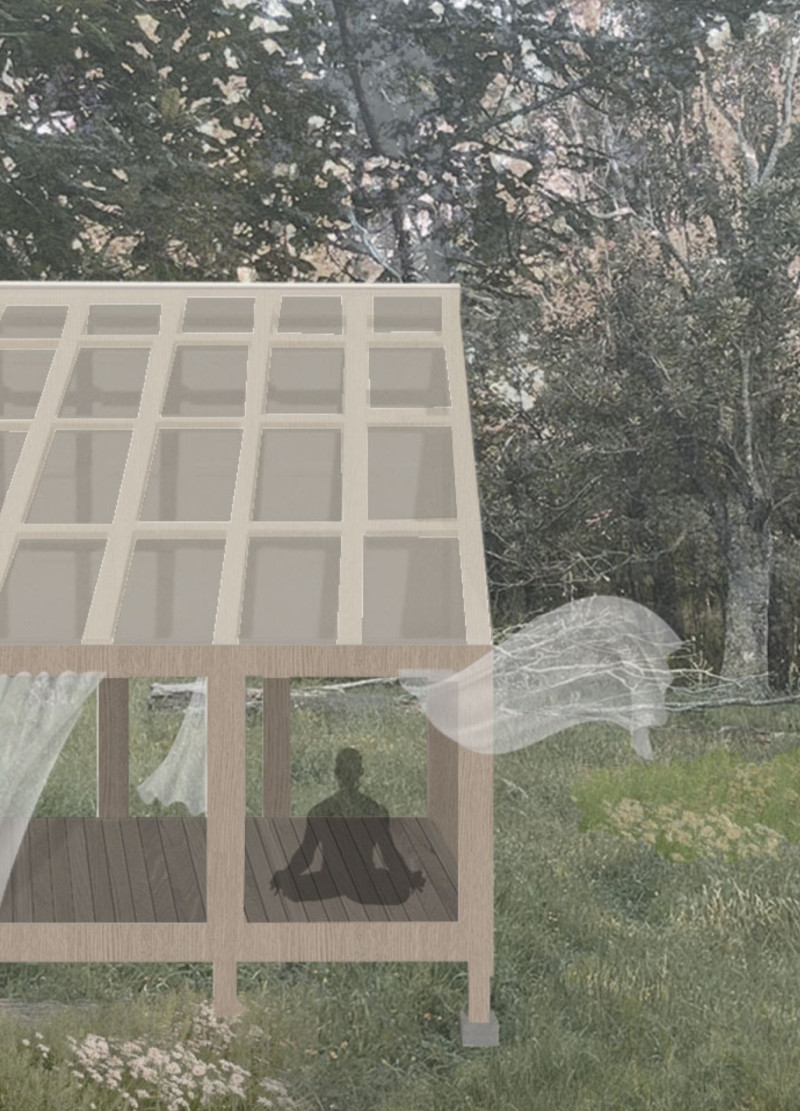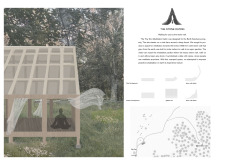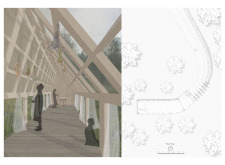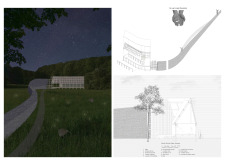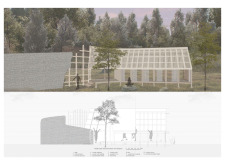5 key facts about this project
The Tiny Kiwi Meditation Cabin is located on the Earth Sanctuary property, surrounded by expansive farmland and thick forest. Designed as a peaceful space for meditation, the building aims to connect visitors with nature. Its overall concept is centered on creating an environment where individuals can pause and reflect while enjoying the beauty of the landscape.
Wall as Pathway
The stone wall is a key feature of the design, measuring 600 mm in width. It functions as both a boundary and a pathway. Visitors can walk along the wall, which leads them directly to the open pavilion. This thoughtful layout encourages a gradual engagement with the natural environment. By removing traditional entry points, the design promotes a sense of freedom and flow as guests approach the meditation space.
Pavilion Design
The pavilion is positioned strategically to face the forest, allowing visitors to take in views of the trees and wildlife. The open structure invites in natural light, creating a warm and inviting atmosphere. The lack of doors facilitates movement and access, reinforcing the idea of unhindered entry into a calm space meant for contemplation. It becomes a venue for quiet reflection, surrounded by the sounds of nature.
Materiality and Aesthetics
Materials used in the construction reflect the aim of connecting with the environment. The stone wall, strong and grounded, establishes a physical link to the land. Wooden cladding adds a natural look that integrates well with the surroundings. Polycarbonate sheets allow light to filter into the pavilion gently, creating a soft brightness. Plywood and insulation contribute to the structural integrity and comfort of the space, ensuring that it is both durable and welcoming.
Interaction with Nature
The design embodies the notion of coexistence with the natural world. The compact cabin serves not only as a place for meditation but as part of the ecosystem around it. This integration creates an experience where visitors can truly feel connected to their surroundings. The view of the forest framing the pavilion encourages a sense of stillness and reflection, making it a space where one can pause and appreciate the present moment.


